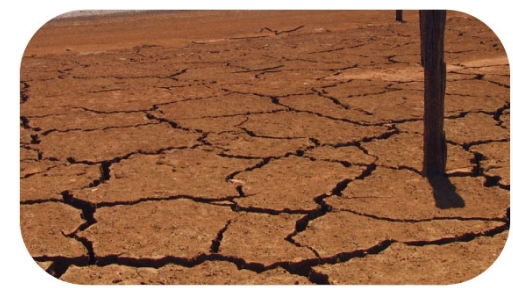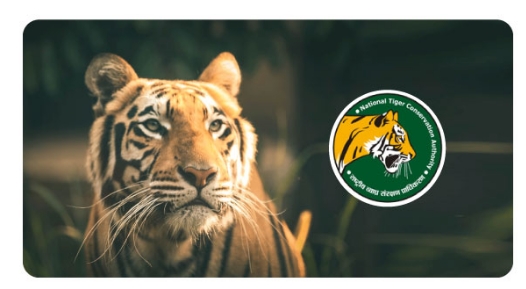
CBSE Class 8 Science Notes Chapter 5: Chapter 5 of CBSE Class 8 Science, titled "Conservation of Plants and Animals," emphasizes the importance of protecting biodiversity. It discusses how deforestation, urbanization, and other human activities lead to habitat destruction and environmental imbalances.
The chapter explains the adverse effects of deforestation, such as soil erosion and climate change, and introduces the concepts of flora, fauna, endangered species, and extinction.CBSE Class 8 Science Notes Chapter 5 Overview
Chapter 5 of CBSE Class 8 Science, titled "Conservation of Plants and Animals," focuses on the importance of protecting biodiversity. It explains how human activities like deforestation, urbanization, and industrialization have led to the destruction of forests and wildlife, causing an imbalance in nature. The chapter highlights the adverse effects of deforestation, such as loss of habitat, soil erosion, and climate change. It introduces the concept of biodiversity and emphasizes the importance of preserving ecosystems. Endangered species are discussed, and the chapter stresses the need for their protection to prevent extinction. It also covers the importance of national parks, wildlife sanctuaries, and biosphere reserves in conserving plants and animals.CBSE Class 8 Science Notes Chapter 5 PDF
The chapter promotes awareness of conservation and encourages practices that support the preservation of our natural world. Hence, here we have provided CBSE Class 8 Science Notes Chapter 5 Conservation of Plants and Animals pdf for the ease of the students -CBSE Class 8 Science Notes Chapter 5 PDF
CBSE Class 8 Science Notes Chapter 5 Conservation of Plants and Animals
Here we have provided CBSE Class 8 Science Notes Chapter 5 Conservation of Plants and Animals -Extinction
A species goes extinct when it is totally eliminated from the planet. A species is deemed extinct if the last member of the species passes away.Deforestation
Deforestation is the process of destroying forests through tree-cutting. Numerous animals lose their habitat as a result of deforestation. Deforestation refers to the large-scale clearing or removal of forests, often for agricultural, industrial, or urban development purposes. This practice results in the loss of trees, which are crucial for maintaining ecological balance. Deforestation leads to adverse effects such as habitat destruction, loss of biodiversity, soil erosion, and climate change.
Causes of Deforestation
The following are some of the causes of deforestation: obtaining land for farming. constructing factories and homes. creating furniture or obtaining fuel from wood. Deforestation can also result from natural causes like severe droughts and forest fires.Consequences of Deforestation
The earth's temperature and pollution level rise as a result of deforestation. The atmospheric concentration of carbon dioxide rises as a result. Additionally, it lowers groundwater levels.Droughts
Drought is the lack of water in an area. Droughts can happen due to a lack of rainfall. A drought is an extended period of abnormally low rainfall, resulting in water shortages that affect agriculture, wildlife, and human activities. Droughts can cause crop failure, reduce water supply, and lead to food insecurity and economic loss. They also contribute to environmental degradation, such as soil erosion and desertification. Droughts may arise due to natural climate patterns or human-induced factors like deforestation and overuse of water resources. The effects of drought can be long-lasting, impacting ecosystems, livelihoods, and communities. Mitigation strategies include water conservation, sustainable land management, and the development of drought-resistant crops.
Desertification
Desertification is the process by which flora erodes into a desert as a result of severe weather. The desertification in certain regions is also a result of human activity like deforestation and inadequate irrigation.Global Warming
The term "global warming" refers to alterations in the worldwide climate. The average temperature rises, which usually causes the ice caps in the poles to melt. Global warming is caused by excessive pollution and deforestation.Species
A species is a group of individuals that can breed and successfully produce fertile offspring.Make the World a Greener Place
Recycling of Paper
Since the paper industry requires wood pulp, it is one of the main causes of deforestation. Paper recycling can aid in the paper industry's reduction of wood pulp usage.Reforestation
Reforestation is restocking the destroyed forests by planting new trees.Wildlife Conservation
Wildlife conservation is the practice of protecting animal species and their habitats to prevent extinction and maintain biodiversity. It involves preserving ecosystems, safeguarding endangered species, and addressing threats such as habitat destruction, poaching, and climate change. Wildlife conservation efforts include establishing protected areas like national parks, wildlife sanctuaries, and biosphere reserves. Laws and regulations, along with international agreements, also play a critical role in conservation.Conservation of forest and wildlife
We must protect the forest and its species because of the threat posed by human excess. In order for us to preserve the natural balance, wildlife is essential.Wildlife sanctuary
A wildlife sanctuary is a naturally occurring sanctuary, such as an island, that provides protection for species from hunting, predation, competition or poaching.National Park
A national park is a protected area established by the government to conserve the natural environment, wildlife, and biodiversity. These parks are designated to safeguard ecosystems, prevent habitat destruction, and preserve endangered species. National parks restrict human activities such as deforestation, hunting, and construction to maintain the ecological balance. They also serve as areas for scientific research and promote ecotourism, allowing visitors to experience nature responsibly.Flora and fauna
The plants and animals found in a particular area are termed flora and fauna of that area, respectively.National Park
A park designated for the conservation of biodiversity is called a national park. The Union Government creates and maintains them.Biosphere Reserves
Biosphere reserves are designated areas aimed at conserving biodiversity, promoting sustainable development, and supporting scientific research. These reserves are recognized under UNESCO’s Man and the Biosphere (MAB) Programme and consist of three zones: the core area (strictly protected for conservation), the buffer zone (where activities compatible with conservation are allowed), and the transition zone (for sustainable human activities). Biosphere reserves focus on protecting ecosystems, flora, and fauna while allowing local communities to engage in sustainable practices.Biosphere and Biodiversity
The area of the earth that is home to living things or sustains life is known as the biosphere. The range of species that exist on Earth, their interactions with one another, and their link to the environment is referred to as biological diversity, or biodiversity.Endemic species
Endemic species are those species of plants and animals which are found exclusively in a particular area.Biosphere Reserve
Reserves for the biosphere are places where human activity is prohibited. These locations support the preservation of threatened species.Project Tiger
The government started Project Tiger in order to preserve and safeguard the nation's declining tiger population. There are a number of natural parks connected to the Project Tiger effort.
Endangered Animals
Animals whose numbers are diminishing to a level that they might face extinction are known as endangered animals.Ecosystem
An ecosystem is the culmination of all the flora, fauna, and microbes found in a region, as well as inanimate elements like the soil, climate, river deltas, and so forth.Red Data Book
Red Data Book is the source book which keeps a record of all the endangered animals and plants.Migration
Animals migrate when they move from one area to another on a regular basis. Usually, people do it to procreate and get away from hostile environments. Migratory birds and fish are common.Benefits of CBSE Class 8 Science Notes Chapter 5
The benefits of studying CBSE Class 8 Science Chapter 5 - Conservation of Plants and Animals are numerous:Environmental Awareness: It raises awareness about the significance of biodiversity and the need to conserve plants and animals, promoting environmental responsibility.
Understanding of Ecosystems: The chapter explains the importance of ecosystems and how deforestation, urbanization, and other human activities disrupt natural habitats.
Conservation Practices: Students learn about practical measures like afforestation, reforestation, and setting up protected areas (national parks, wildlife sanctuaries, and biosphere reserves).
Wildlife Protection Knowledge: It emphasizes the protection of endangered species and the laws and organizations that work toward conservation.
Promotes Sustainability: By studying the chapter, students are encouraged to adopt sustainable practices and contribute to preserving natural resources for future generations.
CBSE Class 8 Science Notes Chapter 5 FAQs
How can we conserve the plants and animals?
What is the need for conservation of plants and animals?
Why do we need to conserve plants?
What is necessary for plants and animals?









